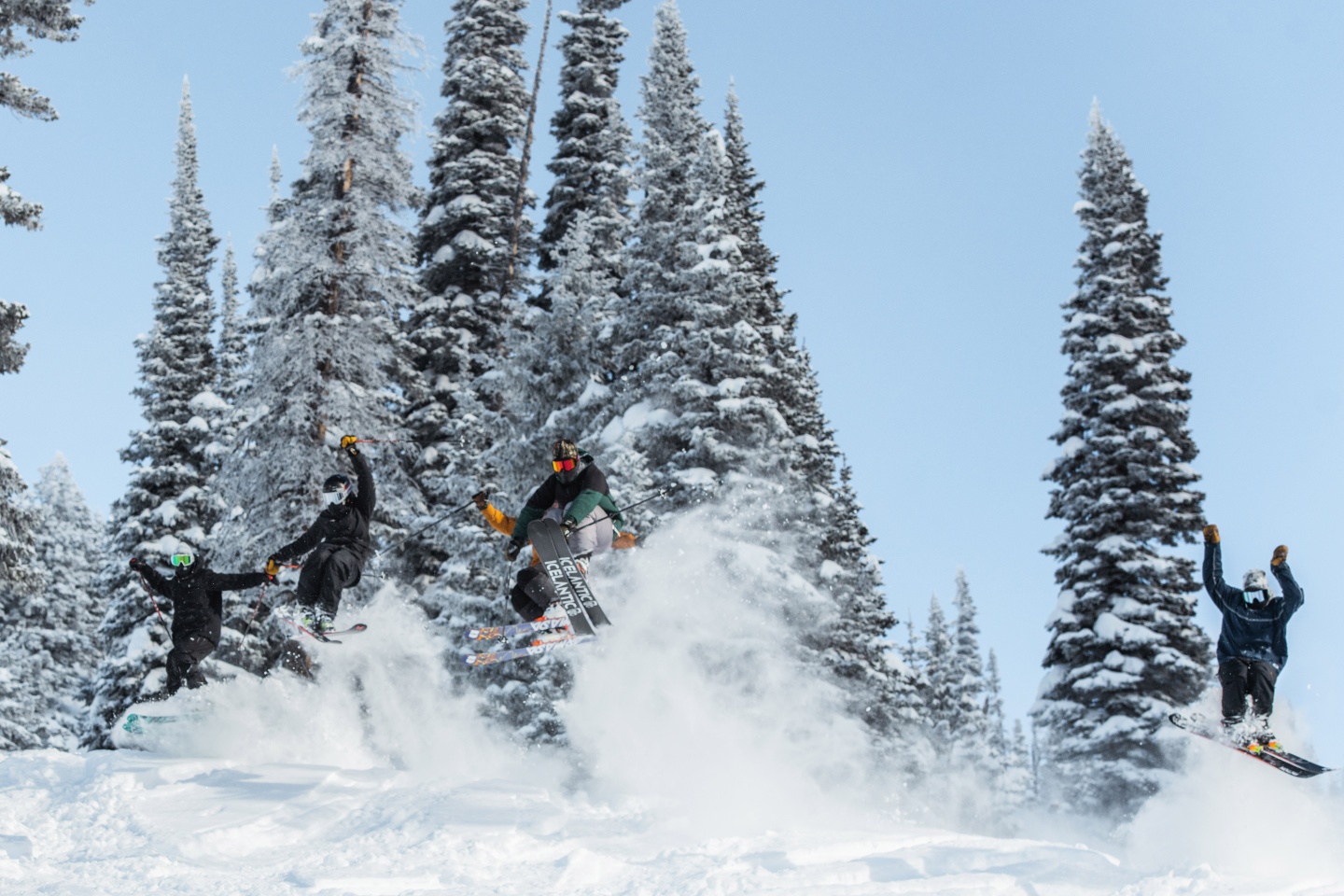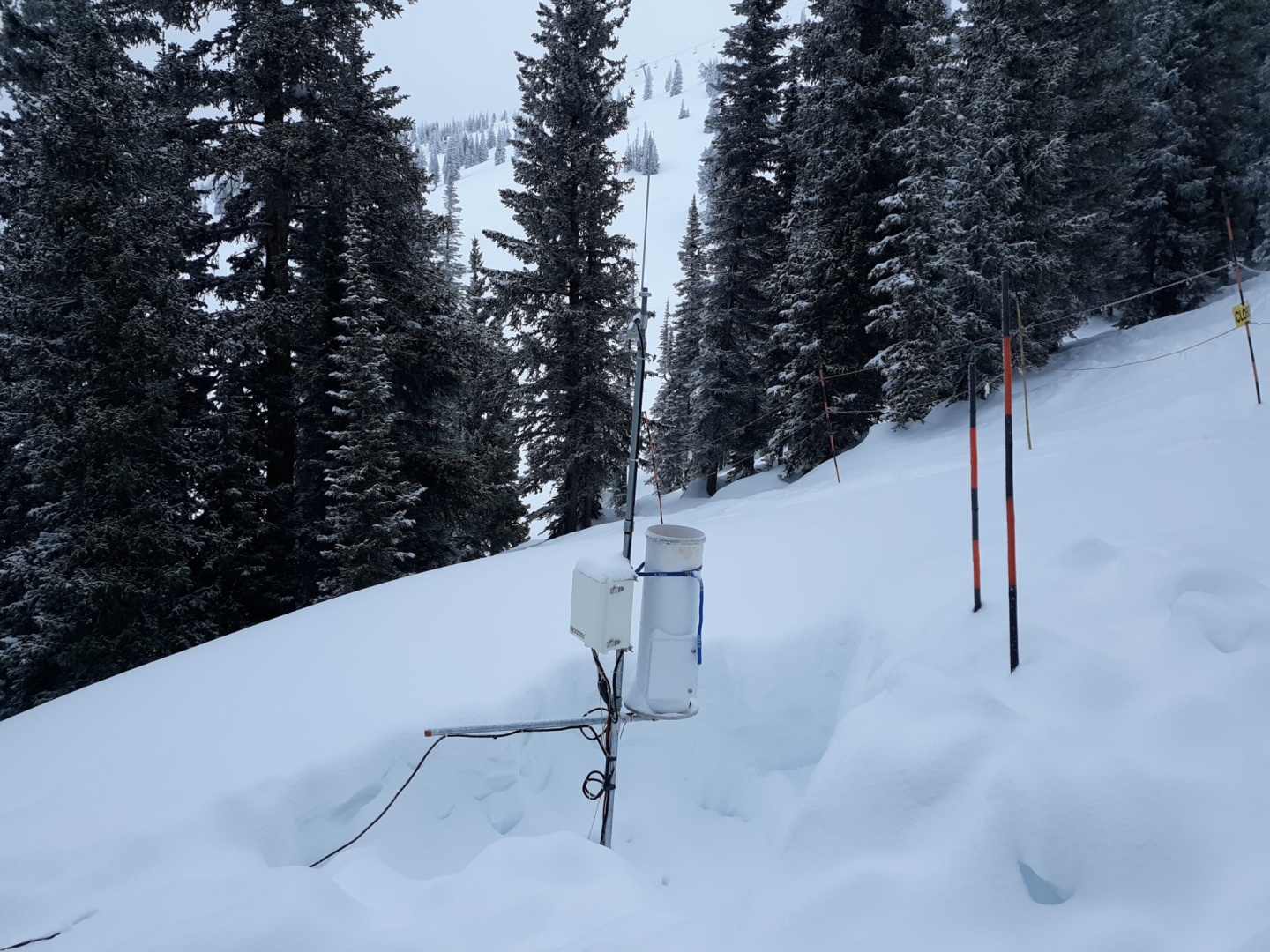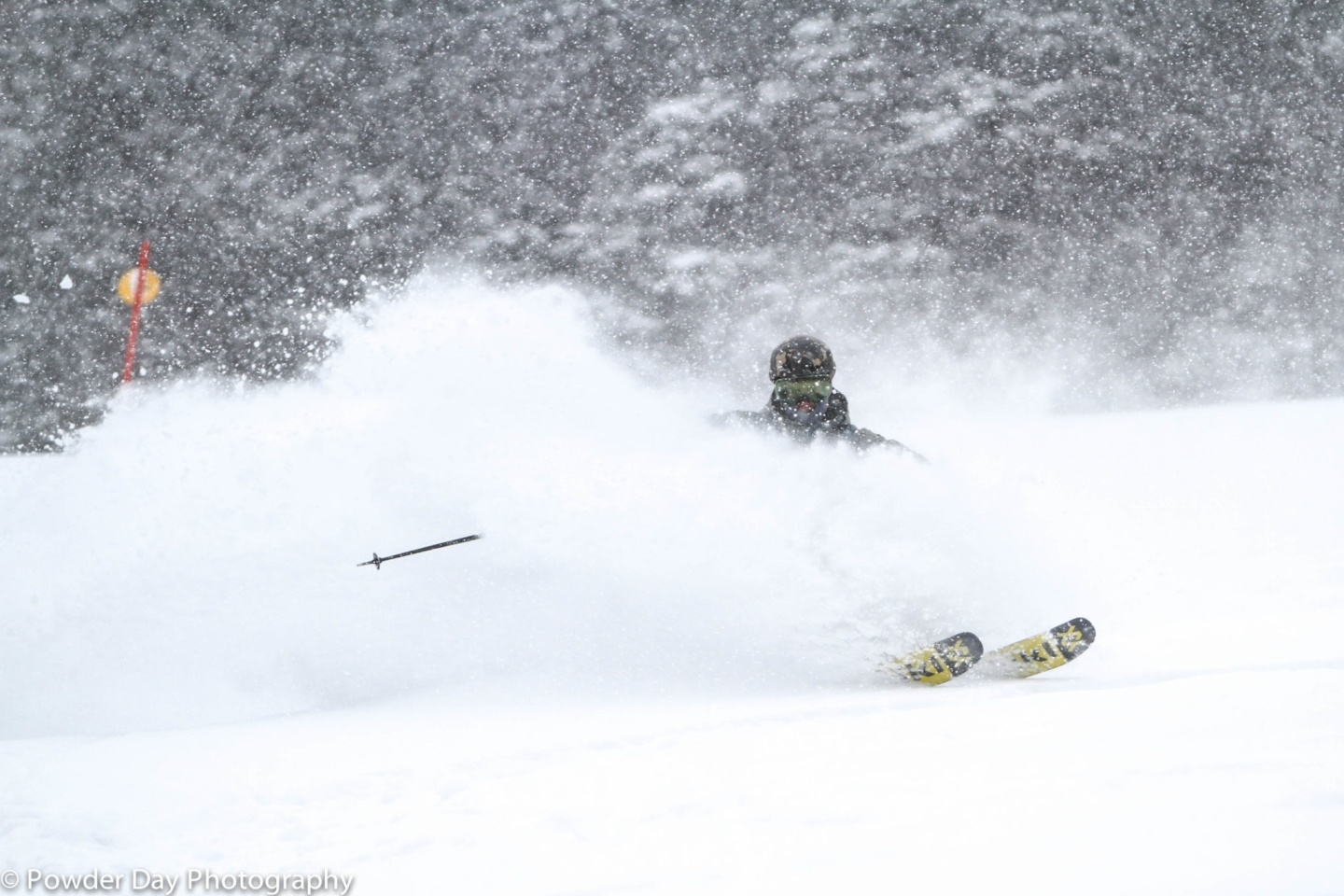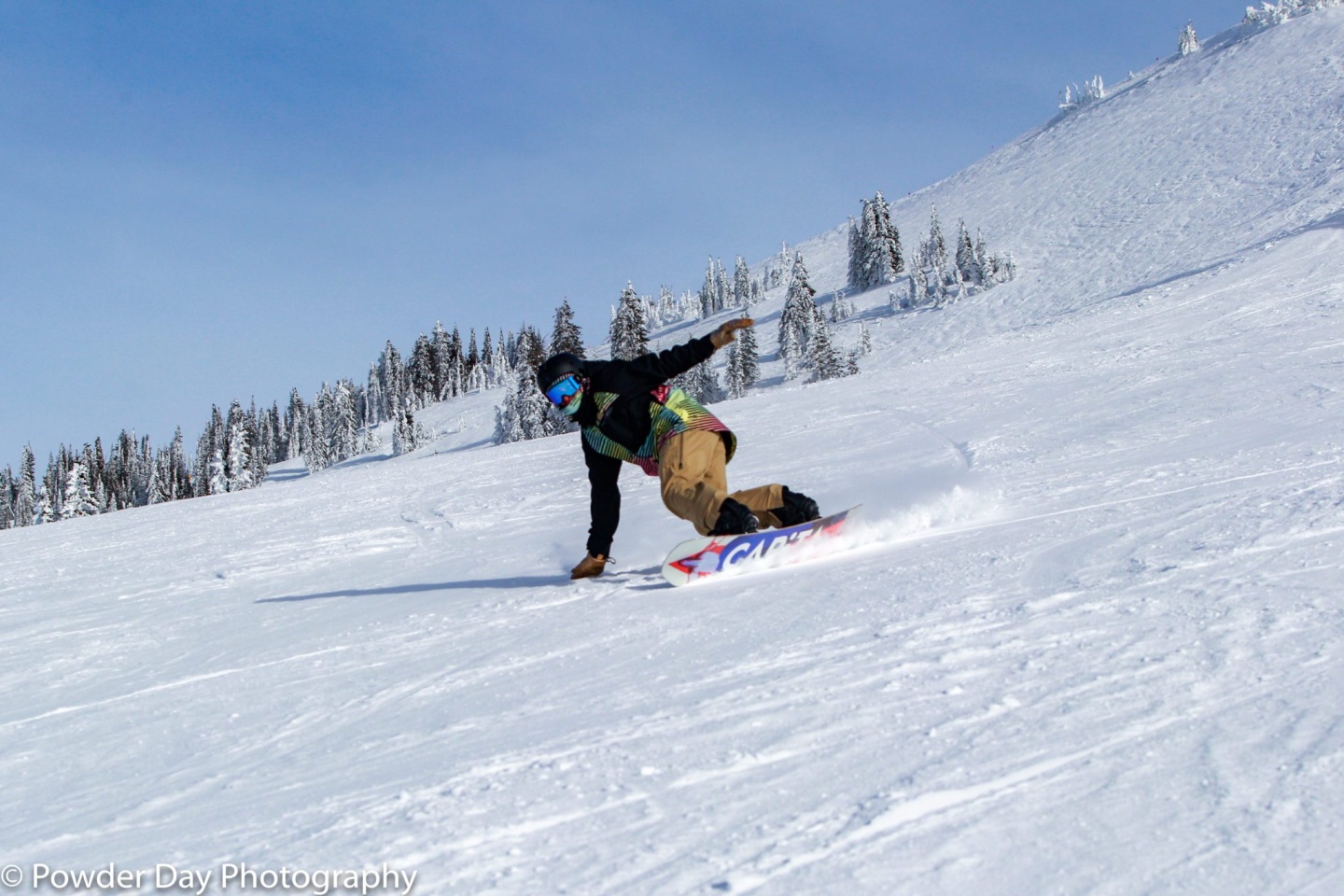
BEHIND THE REPORT: WHAT GOES INTO SNOW REPORTING AT GTR
EVER WONDERED WHAT IT TAKES TO DO 'THE REPORT'?
The alarm clock’s buzzing rips through the early-morning peace. Outside, the snow is falling on top of the 8 inches that already cover the driveway.
Out of habit, you check the snow report update on the Grand Targhee website. It says 10″ in 24 hrs… That’s good enough to drag yourself out of bed, throw on your gear with the intensity of a firefighter responding to a call, and drive (responsibly) up to the mountain.
You get up to the ‘Ghee and, judging from the sparse snow in the parking lot, an unwelcome thought briefly crosses your mind. “Maybe, the snow report was wrong? Is this 10″ day only a 3″ day?”
Pushing such heresy from the realm of possibility, you quickly snap the buckles on your boots or ratchet your binding straps and catch the first chair to the top of DC.
Unloading the lift, you centerpunch the run right underneath the chairs. Expecting a bottomless slash and the ensuing congratulatory roses floating down from the spectators above, you take a hard left, and the clatter of a hardpack, boiler-plate turn permeates the air. Where are those 10?”
Let’s break it down.
Many complex variables go into releasing the numbers for total snowfall at Grand Targhee every morning by 6:30 am. Snow total numbers are taken from two locations, the Chief Joe Bowl and SnoTel measuring stations.
The Chief Joe measuring site gives us our mid-mountain measurements and is located below the midway traverse. The SnoTel Site is located below Mary’s and is maintained by the Natural Resources Conservation Service or NRCS. It is the site we get our upper mountain measurements from.
I hear the youtube commenters yelling through their screens; what about The Stick of Truth? Although the Stick of Truth is a fantastic tool to see what snow conditions are like around the base area, we go with the scientific measuring sites when reporting.
All the snow measurements are updated remotely/electronically and can be accessed via the internet for all to see. Bridger-Teton Avalanche Center also provides a convenient sheet full of all sorts of parameters that help in reporting the snow conditions.
Things like wind transport, snow density, and rate of accumulation can all be ascertained from a collection of measurements provided by these sheets.

Now for some common questions, we get asked here at Targhee regarding our snow reporting.
Q: Why is your base depth XX”? there’s no way there’s that much snow at the base of the mountain.
A: Our base depth is taken from one of our snow measuring sites that we talked about above. The base depth is not measured at the base of the mountain. We take it at our snow measuring sites because the snow is undisturbed and uncompacted. When we ski or ride on snow, it becomes much denser affecting the base depth, so having a measuring device at the base area would have a lot of outside influences, making it not a reliable snow measuring site.
Q: Why is your total snow high than either of your measuring site’s totals?
A: Each storm is different; for that reason, we take the numbers from whichever snow measuring site reports the most. A good habit is when you’re looking at the snow report page on our website, scroll down to see which site we are taking our total from that day. That will give you a good idea of where those powder stashes are. If our total is coming from Chief Joe more often than less, we had a high wind storm, and most of that fluffy snow has blown into the medicines.
Q: Does wind loading affect the measurement sites?
A: It most certainly does. The measuring sites are out in the elements, so the wind can significantly affect them. In the same way that your favorite secret powder stash can get filled in so. The snow measurement sites do well to represent what the snow in that area will be like. For example, if we got a lot of snow reported at Chief Joe’s station, the trees near the Midway Traverse will be skiing great.

As many will find out through a lifetime of skiing and riding, being one’s amateur forecaster is essential to the joy of skiing and snowboarding. It springs from our eternal well of optimism; on days where graupel falls in sheets and the wind blows sideways, there’s always the promise of tomorrow.
It is easier than ever now to get great up-to-date forecasting information from apps and websites like OPENSNOW. Even with these new forecasting sites, we sometimes get lost in perfect visions of what the next day will be, and, sure, much of the time, it doesn’t materialize.
That’s just the game, though; maybe one out of ten, you’ll predict that perfect sneaker storm that drops 10” overnight and catches everyone else with boots off and briefcases in hand.
Or, the measurement stations are registering 3” on the mountain. Still, a north-facing pocket has blown in 14” of sweet, sweet cowboy powder.

The point is, snow measurements on the snow report are variable but scientifically accurate representations of the mountain as a whole. These numbers come from cold, unfeeling robots whose only purpose in life is to feed us the data we need to know whether the day is headed towards epic… or not.
The perfect snow report blends this hard data with the intuition and observation that can only come from someone that genuinely loves the mountain. Through this love, the individual appreciates its intricacies and personality, noticing the subtle terrain enhancements.
Many may think that being a GTR snow reporter would be a dream job. It can be.
It also comes with plenty of 4 am alarms; and the stress of being the person responsible for sharing the day’s conditions in an accurate manner. At the end of the day, it is a job you have to love. Otherwise, it can (and will) chew you up and spit you out. Like the best things in life, the work and dedication put into it reflect in the rewards, both physical and mental, it gives.
Below are some links that we use to report the snow. Dive deep and enjoy becoming your own snow reporter!